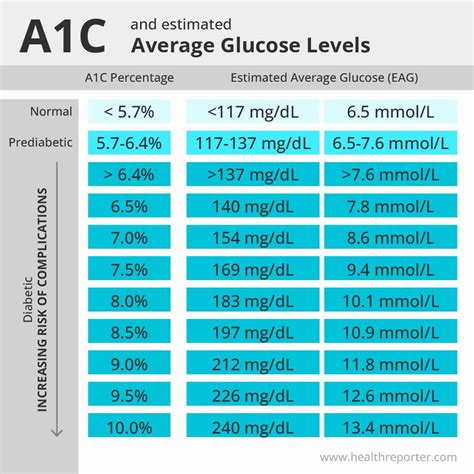Knee replacement surgery, also known as arthroplasty, is a highly effective procedure designed to alleviate pain and restore mobility in individuals suffering from severe knee damage or arthritis. The operation involves replacing the damaged knee joint with an artificial one, typically made of metal and plastic components. This surgical intervention has revolutionized the treatment of knee-related disorders, offering patients a chance to regain their quality of life and engage in activities they once enjoyed.
Understanding Knee Anatomy and the Need for Replacement
The knee joint is a complex structure consisting of bones, cartilage, ligaments, and tendons, all working in harmony to facilitate movement. However, disease or injury can compromise this delicate balance, leading to pain, stiffness, and limited mobility. Conditions such as osteoarthritis, rheumatoid arthritis, and traumatic injuries can cause significant cartilage loss and bone deformation, necessitating medical intervention. When conservative treatments such as physical therapy, medications, and lifestyle modifications fail to provide adequate relief, knee replacement surgery may be considered.
Preparing for Knee Replacement Surgery
Preparation is key to a successful knee replacement operation. Patients undergo a thorough evaluation, including physical examinations, blood tests, and imaging studies (X-rays, MRIs), to assess the extent of knee damage and overall health. This process helps identify any potential risks and facilitates the development of a personalized surgical plan. Additionally, patients are often advised to lose weight, stop smoking, and engage in exercises that strengthen the muscles around the knee, which can aid in the recovery process.
The Surgical Procedure
Knee replacement surgery is performed under general anesthesia or spinal anesthesia, ensuring the patient remains comfortable throughout the procedure. The operation typically lasts about two hours, during which the surgeon:
- Makes an Incision: A cut is made in the skin to expose the knee joint.
- Removes Damaged Cartilage and Bone: The damaged portions of the knee joint are carefully removed.
- Prepares the Joint for Implantation: The remaining bone is prepared to accommodate the artificial components.
- Implements the Prosthesis: The artificial joint is inserted, consisting of a metal femoral component, a metal tibial component, and a plastic spacer.
- Closes the Incision: The skin is closed, and the wound is dressed.
Recovery and Rehabilitation
The recovery process is crucial for the success of knee replacement surgery. Immediately after the operation, patients are taken to the recovery room for monitoring. Pain management is a priority, with various medications and techniques employed to ensure comfort. Once stabilized, patients are transferred to their hospital room, where they begin their rehabilitation journey. This typically involves:
- Physical Therapy: Exercises and movements designed to restore knee function and strength.
- Pain Management: Ongoing assessment and adjustment of pain relief strategies.
- Wound Care: Monitoring and care of the surgical wound to prevent infection.
Most patients are discharged from the hospital within a few days, with some requiring short-term rehabilitation in a specialized facility. Home recovery involves continuing physical therapy, managing pain, and gradually returning to normal activities.
Potential Risks and Complications
While knee replacement surgery is generally safe, as with any surgical procedure, there are potential risks and complications. These can include:
- Infection: Bacterial infection of the wound or the prosthesis.
- Blood Clots: Formation of blood clots in the legs or lungs.
- Nerve Damage: Injury to the nerves surrounding the knee.
- Prosthesis Failure: Loosening or failure of the artificial joint.
- Allergic Reactions: Reactivity to the materials used in the prosthesis.
Prompt medical attention is essential if any signs of complications arise, such as increased pain, swelling, redness, or fever.
Advances in Knee Replacement Technology
The field of knee replacement surgery is continuously evolving, with advancements in technology and surgical techniques aimed at improving outcomes and patient satisfaction. Some of the recent developments include:
- Robotic-Assisted Surgery: Utilizing robotic systems to enhance precision and minimally invasive techniques.
- Customized Implants: Creating prostheses tailored to the individual’s anatomy for better fit and function.
- Biologic and Tissue Engineering: Exploring the use of biologic materials and tissue engineering to promote healing and reduce rejection.
These innovations hold promise for further reducing recovery times, improving the durability of implants, and enhancing the overall quality of life for patients undergoing knee replacement surgery.
Conclusion
Knee replacement surgery represents a significant advancement in the management of severe knee conditions, offering patients hopes of regaining mobility and reducing pain. While it is a major surgical undertaking, the benefits can be profound for those appropriately selected for the procedure. As with any medical intervention, thorough discussion with healthcare professionals is essential to understand the potential benefits, risks, and what to expect throughout the journey.
Frequently Asked Questions
What is the average recovery time for knee replacement surgery?
+The recovery time can vary significantly among individuals, but most patients can expect to return to their normal activities within 3 to 6 months after surgery. However, full recovery and realization of the benefits of the operation may take up to a year.
How long does a knee replacement last?
+The durability of a knee replacement can vary depending on factors such as the patient's age, weight, activity level, and the type of implant used. Generally, a well-crafted knee replacement can last for 15 to 20 years or more, although some may need revision sooner.
Can knee replacement surgery be done on both knees at the same time?
+Yes, it is possible to perform knee replacement surgery on both knees simultaneously, a procedure known as bilateral knee replacement. However, this approach is typically recommended for patients who have severe symptoms in both knees and are in overall good health, as it can lead to a longer and more challenging recovery.
What are the alternatives to knee replacement surgery?
+Alternatives to knee replacement surgery include physical therapy, medications to manage pain and inflammation, weight loss, bracing, and in some cases, arthroscopic surgery to clean out damaged tissue. However, for advanced knee damage, these alternatives may offer only temporary relief or may not be effective at all.
How do I choose the right surgeon for my knee replacement surgery?
+Choosing the right surgeon involves researching their experience with knee replacement surgeries, their certifications, patient reviews, and outcomes. It's also important to have a consultation to discuss your specific case, understand their approach, and feel comfortable with their bedside manner and willingness to address your questions and concerns.
Advanced Technologies in Knee Replacement
As technology continues to advance, knee replacement surgery is becoming more precise, less invasive, and more effective. Among the cutting-edge technologies being explored and implemented are:
- Personalized Medicine Approaches: Tailoring the surgical plan and prosthetic device to the individual’s unique anatomy and needs.
- Stem Cell and Regenerative Medicine: Exploring the potential of stem cells to repair or replace damaged knee tissues.
- 3D Printing in Orthopedics: Utilizing 3D printing to create customized prostheses and surgical tools that can improve the accuracy and outcomes of knee replacement surgeries.
These advancements underscore the dynamic nature of knee replacement surgery, offering hope for improved patient outcomes and enhanced quality of life.



